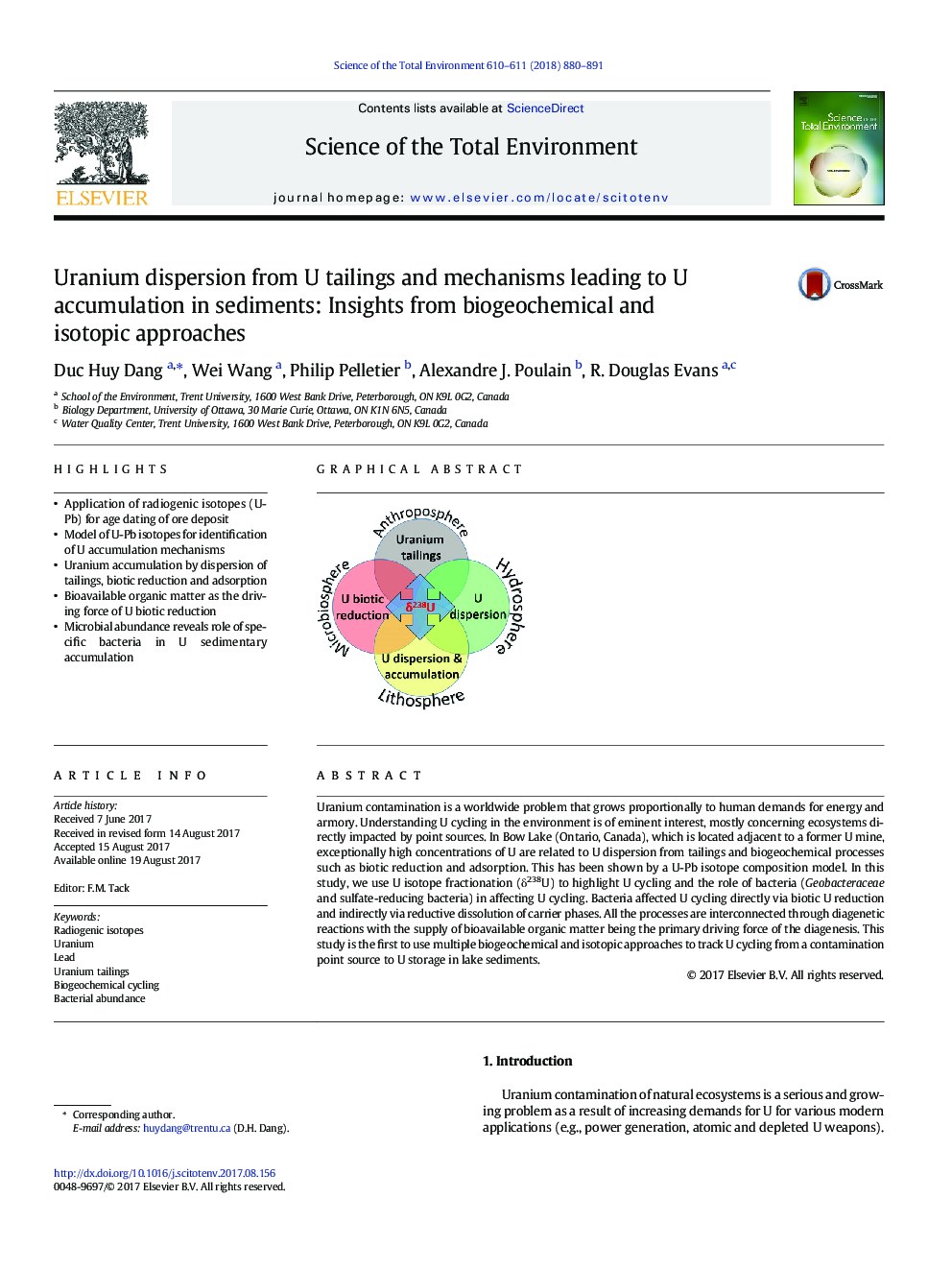| Article ID | Journal | Published Year | Pages | File Type |
|---|---|---|---|---|
| 5750254 | Science of The Total Environment | 2018 | 12 Pages |
â¢Application of radiogenic isotopes (U-Pb) for age dating of ore depositâ¢Model of U-Pb isotopes for identification of U accumulation mechanismsâ¢Uranium accumulation by dispersion of tailings, biotic reduction and adsorptionâ¢Bioavailable organic matter as the driving force of U biotic reductionâ¢Microbial abundance reveals role of specific bacteria in U sedimentary accumulation
Uranium contamination is a worldwide problem that grows proportionally to human demands for energy and armory. Understanding U cycling in the environment is of eminent interest, mostly concerning ecosystems directly impacted by point sources. In Bow Lake (Ontario, Canada), which is located adjacent to a former U mine, exceptionally high concentrations of U are related to U dispersion from tailings and biogeochemical processes such as biotic reduction and adsorption. This has been shown by a U-Pb isotope composition model. In this study, we use U isotope fractionation (δ238U) to highlight U cycling and the role of bacteria (Geobacteraceae and sulfate-reducing bacteria) in affecting U cycling. Bacteria affected U cycling directly via biotic U reduction and indirectly via reductive dissolution of carrier phases. All the processes are interconnected through diagenetic reactions with the supply of bioavailable organic matter being the primary driving force of the diagenesis. This study is the first to use multiple biogeochemical and isotopic approaches to track U cycling from a contamination point source to U storage in lake sediments.
Graphical abstractDownload high-res image (150KB)Download full-size image
